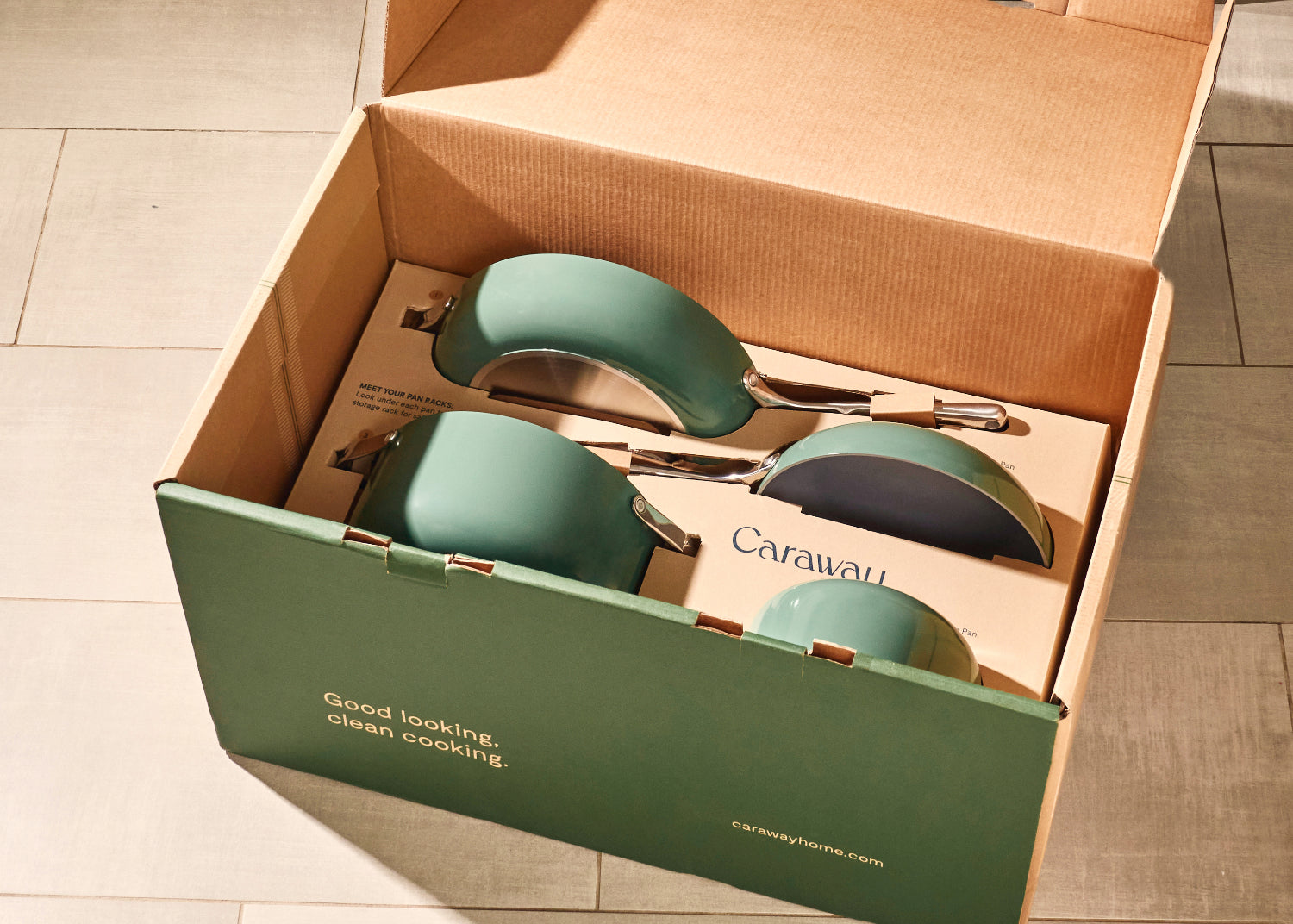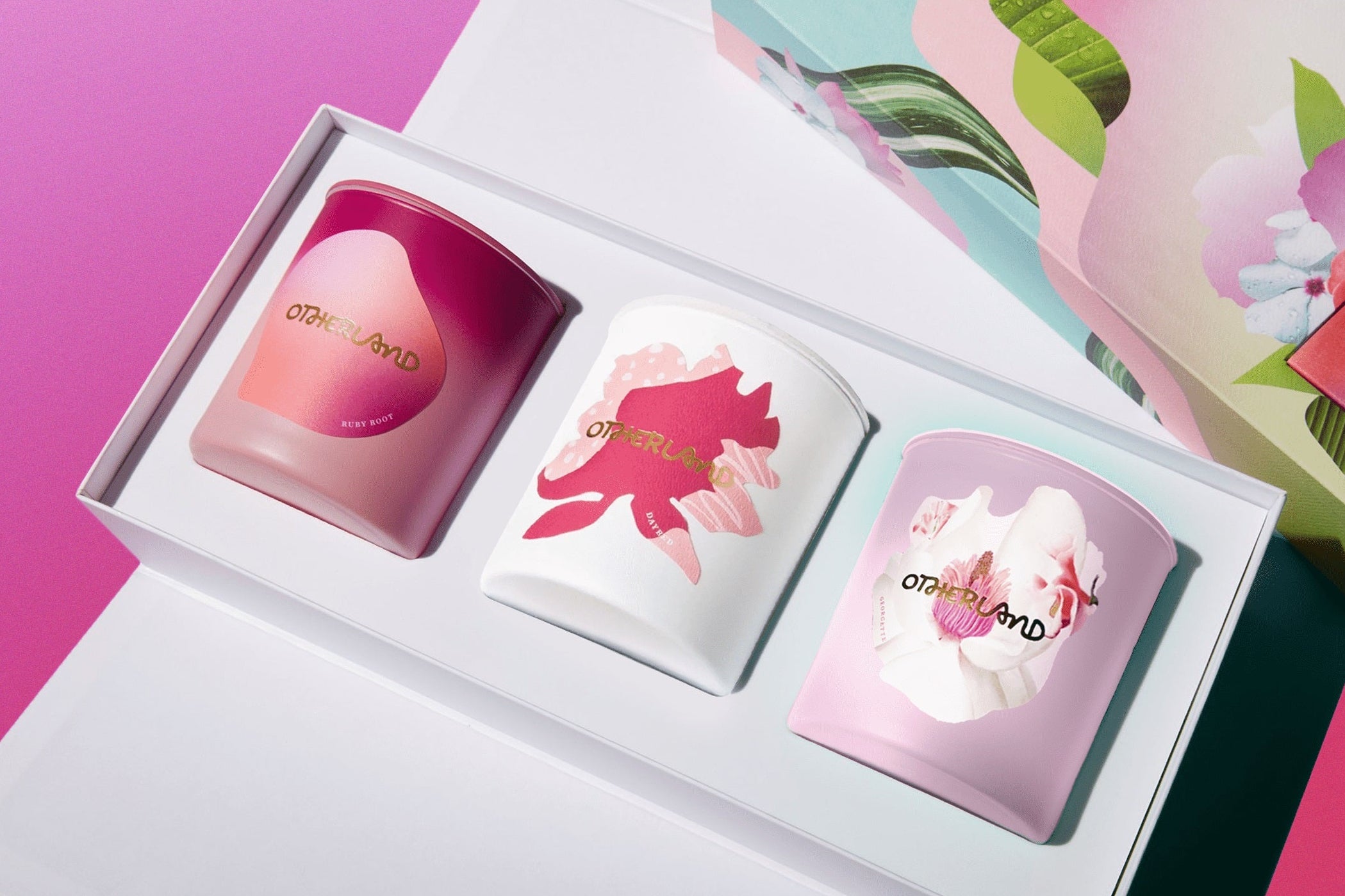Product packaging—everything from garment hang tags to shipping boxes—serves a number of functions, such as identifying product details and providing protection during shipping. It’s also one of the most overlooked marketing opportunities for online brands.
By 2027, nearly 23% of consumer purchases are expected to happen online. This growth has coincided with an increased focus on improving the packing and shipping processes to recreate the personal touch of in-store shopping.
While most packaging is designed to protect or identify your products, taking a purely functional approach means you might be missing out on its full potential. Ahead, learn how to use packaging to deliver your products safely while creating a positive customer experience.
Table of contents

Streamline and save with Shopify Shipping
When you ship with Shopify Shipping, you get access to pre-negotiated rates with carriers in the US, Canada, and Australia and you can manage your entire shipping and delivery process in one place.
Get started with Shopify ShippingWhat is product packaging?
Product packaging refers to the physical materials that house your product. Its main function is to protect products, and can contain usage information, help your product stand up on a retail display, and maintain its contents’ shelf life. But it’s also a company’s chance to delight customers and build brand loyalty through a memorable branded experience.
Product packaging for ecommerce includes both the product packaging itself (say, the glass bottle that contains body cream or hang tag on a sweater) and the outer packaging (box and tissue) that gets that product to its final destination. Both of these types of packaging can be branded and customized to deliver impact.
A holistic branded packaging experience is a set of thoughtful design choices and selection of shipping and packing materials. Its purpose is to provide additional value for your customer and your business by way of creating a positive first impression of your brand identity—ideally, one that’s memorable and shareable.
What is product packaging design?
Product packaging design refers to the phase of brand identity design where you apply logos, branded graphics, and copy to product and shipping packaging. In some cases it refers to designing custom packages from scratch for your unique product. Packaging design applies to any primary packaging that comes into contact with your product (like blister packs) and secondary packaging for shipping purposes.
The packaging design process often involves working with standard size templates from a digital printing company. You can use a tool like Adobe Illustrator to design your product’s packaging or outsource to a professional designer.
The importance of product packaging
Online stores have fewer direct touchpoints to deliver delight compared with physical retail. While there are many advantages to ecommerce for both seller and buyer, the tradeoff is a lack of direct connection between them. When ecommerce shoppers interact with your package after delivery, it’s your first chance to make an impression through a direct touchpoint.
Adding brand value
Product packaging can become an extension of your brand. The choices you make can reflect your brand voice, aesthetic, and even values. For example, Seed, a direct-to-consumer retailer selling probiotic supplements, uses simple branded packaging made from biodegradable sachets and paper foam inserts. This reinforces Seed’s brand values and increases customer satisfaction among its target audience of eco-conscious buyers.

Creating a sharable experience
A great experience is worth sharing. If you deliver a delightful experience from the first website interaction to the moment your customer opens their package, they’ll be more inclined to share it. User-generated content and word-of-mouth marketing are both valuable forms of organic marketing that can benefit brands.
Building loyalty
A positive unboxing experience can also increase customer loyalty and affinity with your brand. Building a long-term brand means bringing customers back time and time again. Investing in retention can move you off of the acquisition treadmill, giving you more time and money to improve your brand experience for your biggest fans.
Growing sustainably
Demand for sustainable options has meant that companies are popping up everywhere to meet it. It’s easier than ever to walk the walk and truly be a sustainable brand, from manufacturing all the way to shipping. When Hero Packaging ran Google Ads for its biodegradable shipping supplies, the response was overwhelming. “In a week, we got a thousand people signing up [for a free sample], and that was the first sign where we said, ’People are really interested in this,’” says co-founder Anaita Sakar.
Types of ecommerce product packaging
Product packaging refers to both the packaging in direct contact with the product and the packaging used for shipping. Both types can be customized through a digital printing company that specializes in custom packaging. Before you dive into packaging design, let’s look at the different types of packaging you can customize.
Primary packaging

Product packaging that is in direct contact with your product is called primary packaging. This refers to the packaging of the product itself, before it’s placed in a shipping box with added materials. Examples of primary packaging include:
- Blister packs
- Hang tags
- Glass or plastic bottles and jars
- Shrink wrap
- Stickers and labels
- Resealable pouches
- Drawstring fabric bags
- Bundling cord or tape
- Air-tight wrapping
- Clamshell packaging
- Paper bands
- Cardboard or plastic tubes
- Shoe boxes
- Jewelry boxes
- Cans
- Paper labels
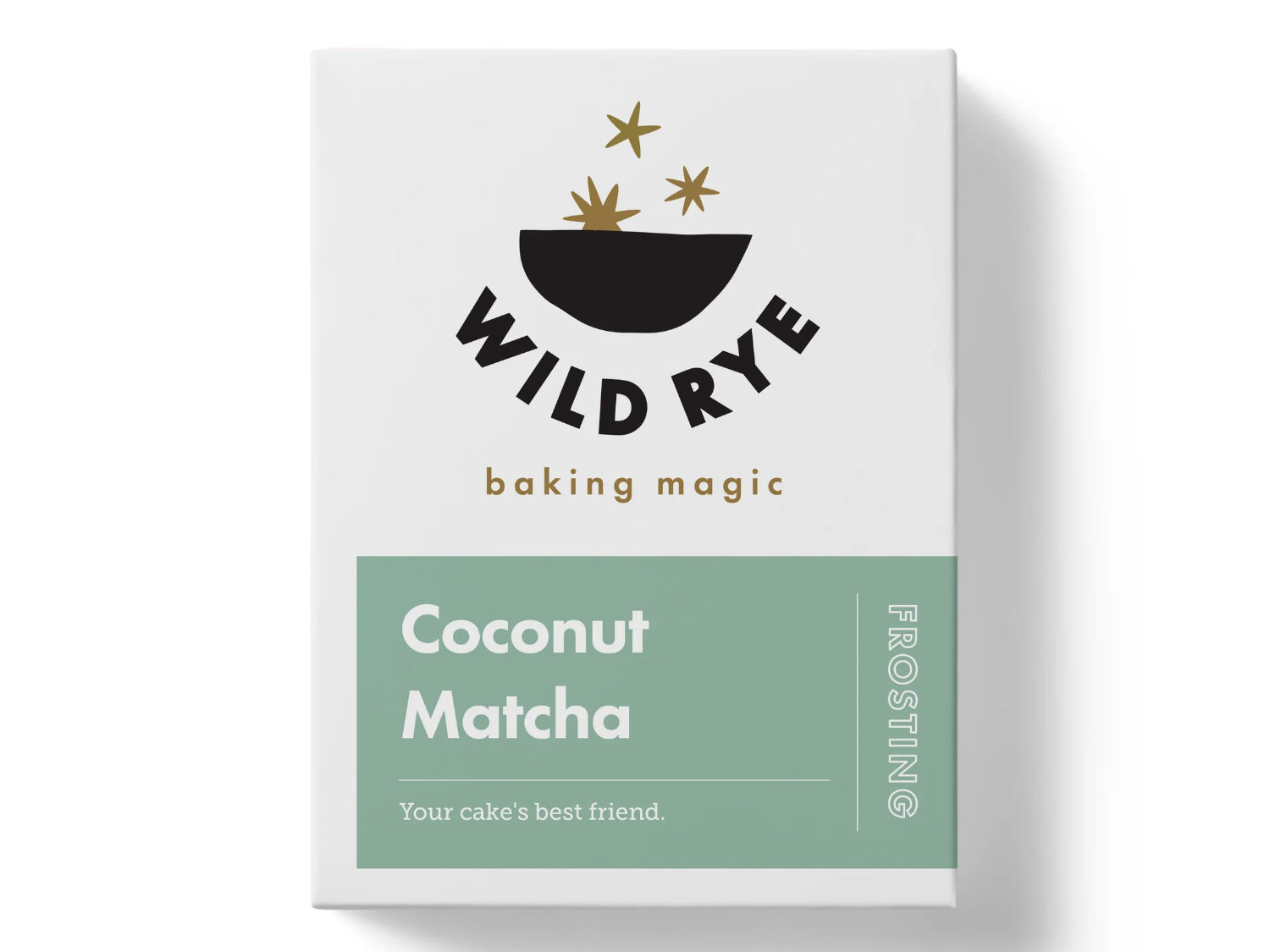
Secondary (shipping) packaging
Before you can ship your products, you’ll need to package them for safe transport. Most products will require some type of box or envelope to protect the order for safe transport, as well as a cushioning material.
Corrugated boxes

Cardboard boxes are the most common type of product packaging used by online retailers. They’re sturdy, don’t add a ton of weight to packages, and can be recycled. Double-walled corrugated boxes can provide extra strength and durability for heavier weight items. Many cardboard boxes are also made from recycled components for a sustainability factor.
Padded mailers
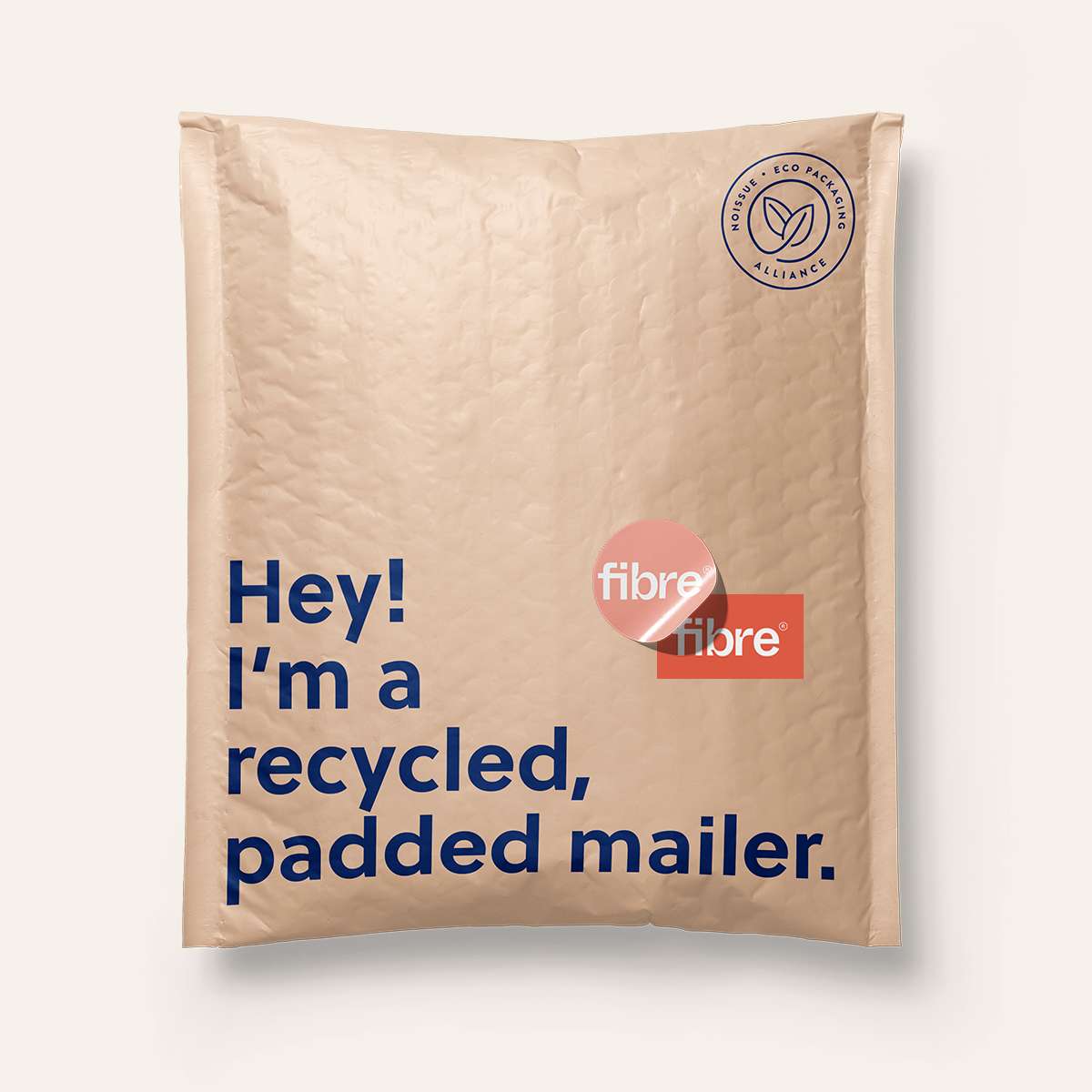
These packages are best for shipping smaller, flat, or delicate items such as jewelry, handcrafted goods, or books. Many of these mailers are made from a polyethylene and contain a cushioned or “bubble” insert. In recent years, more companies have switched to eco-friendly versions made from biodegradable materials or paper.
Bags and envelopes
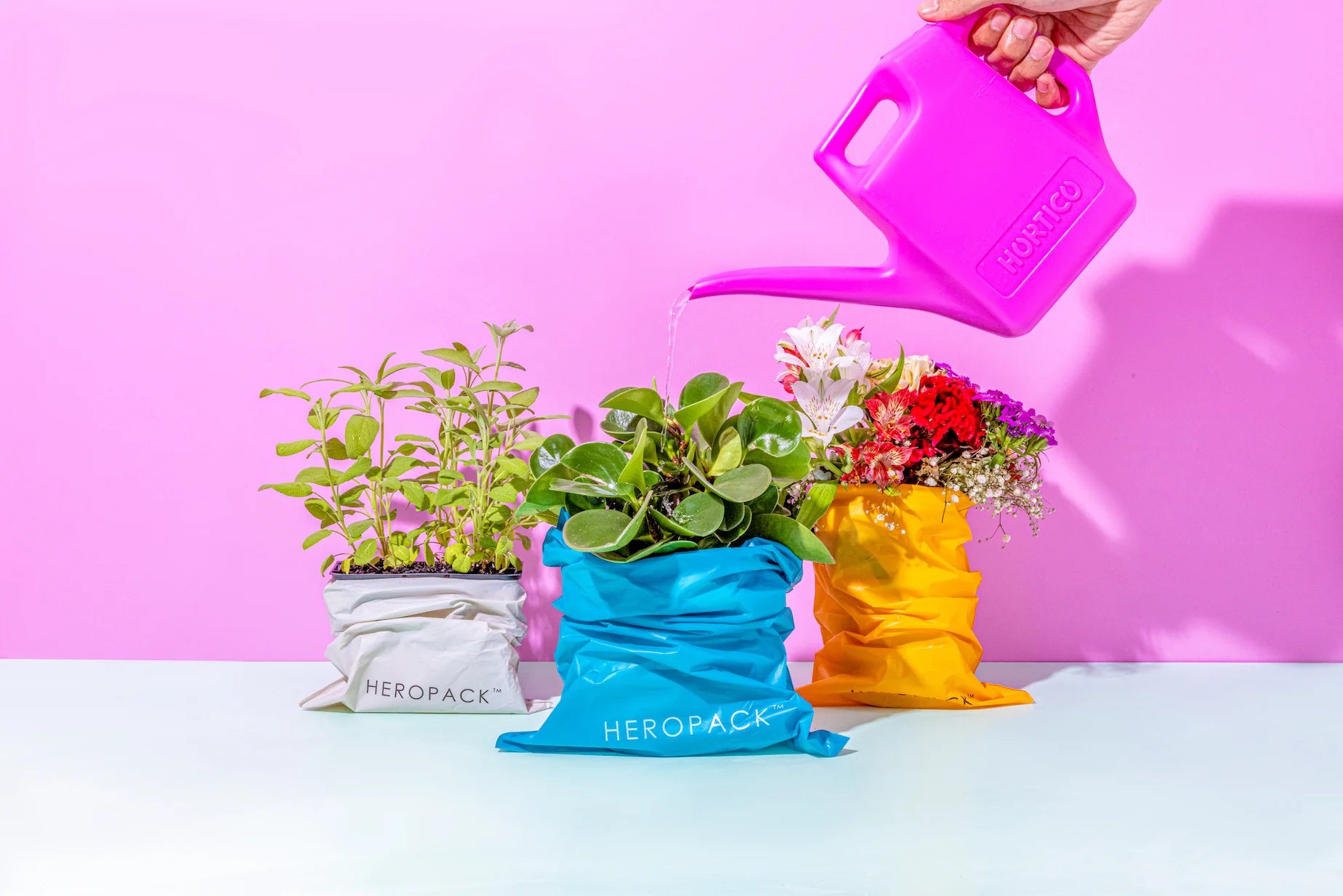
Unpadded polyethylene mailers, Tyvek envelopes, or sustainable alternatives are great solutions for soft items that don’t require impact protection—a perfect packaging solution for apparel companies. Bags and poly envelopes are inexpensive, lightweight, strong, and self-sealing, adding efficiency to your shipping process.
Custom product packaging
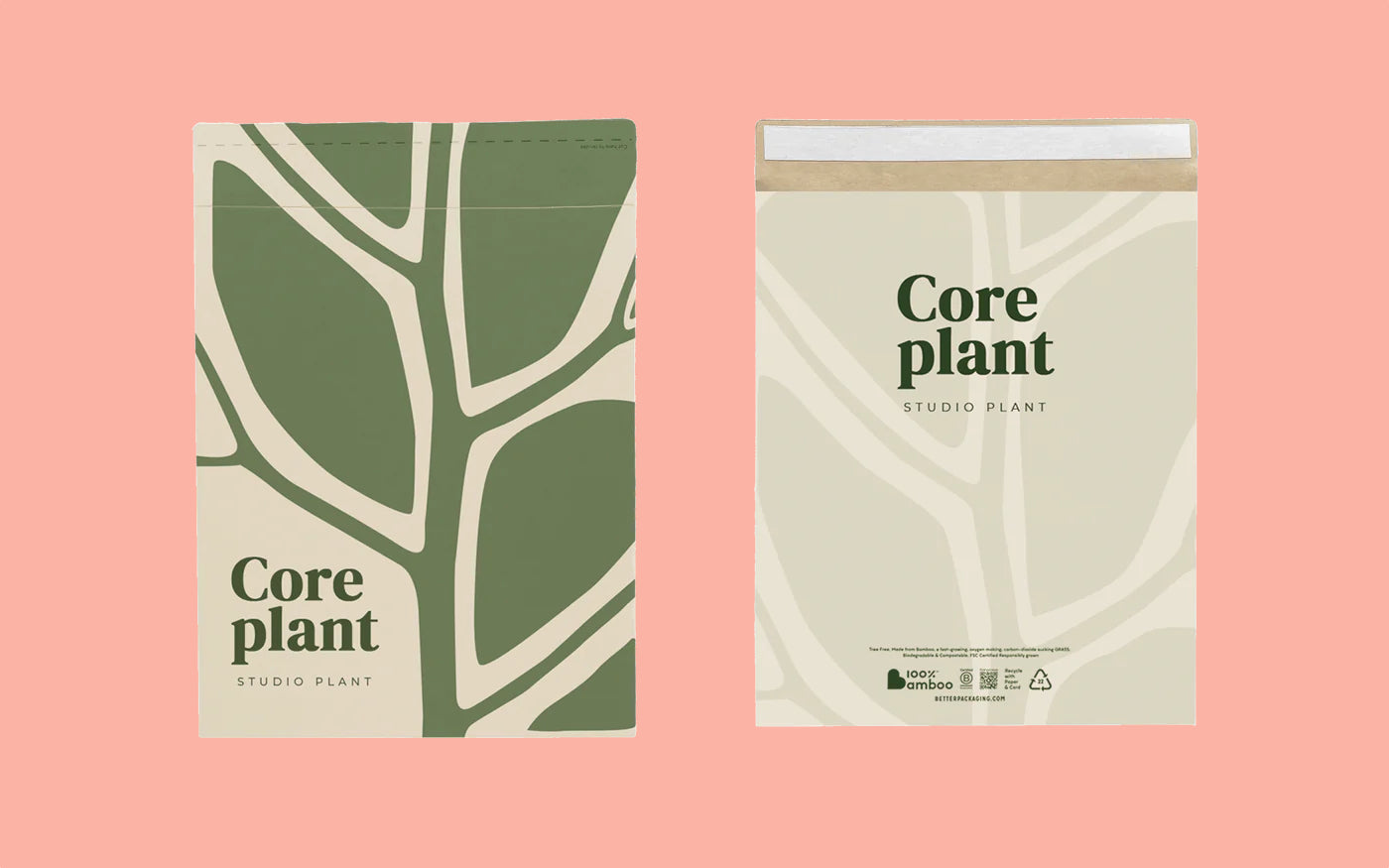
All packaging types described above can be customized with your branding and to your product’s specifications. For specific primary packaging, you may need to work with a manufacturer to design and produce your packaging from scratch. But many standard shipping products can be customized using a company like Hero Packaging or Better Packaging Co.
There are many options for printing and customizing everything from tissue and gift wrap to jewelry boxes and shipping envelopes. Branded outer packaging makes an impression the second it lands on your customer’s door stop.
11 ways to create a custom product packaging experience
Decide which small business packaging options deliver the best experience and most value for you and your customers. Strategically investing in a few of these product packaging supplies can go a long way to creating an unboxing experience that cements your brand’s identity in the minds of customers.
1. Choose the right packaging
The most significant element to consider is your ecommerce shipping container. Depending on your product, this might be a box, bag, or poly mailer. White and brown corrugated packaging options once ruled as the sole option because they’re cheap, sturdy, and get the job done, but they may not create the first impression you’re looking for—or be the right fit for your product.
Do you own a sustainable company? You can opt for biodegradable packaging alternatives made from compressed coconut fibers or compostable mailers made from corn rather than plastic.
2. Add branded tissue paper
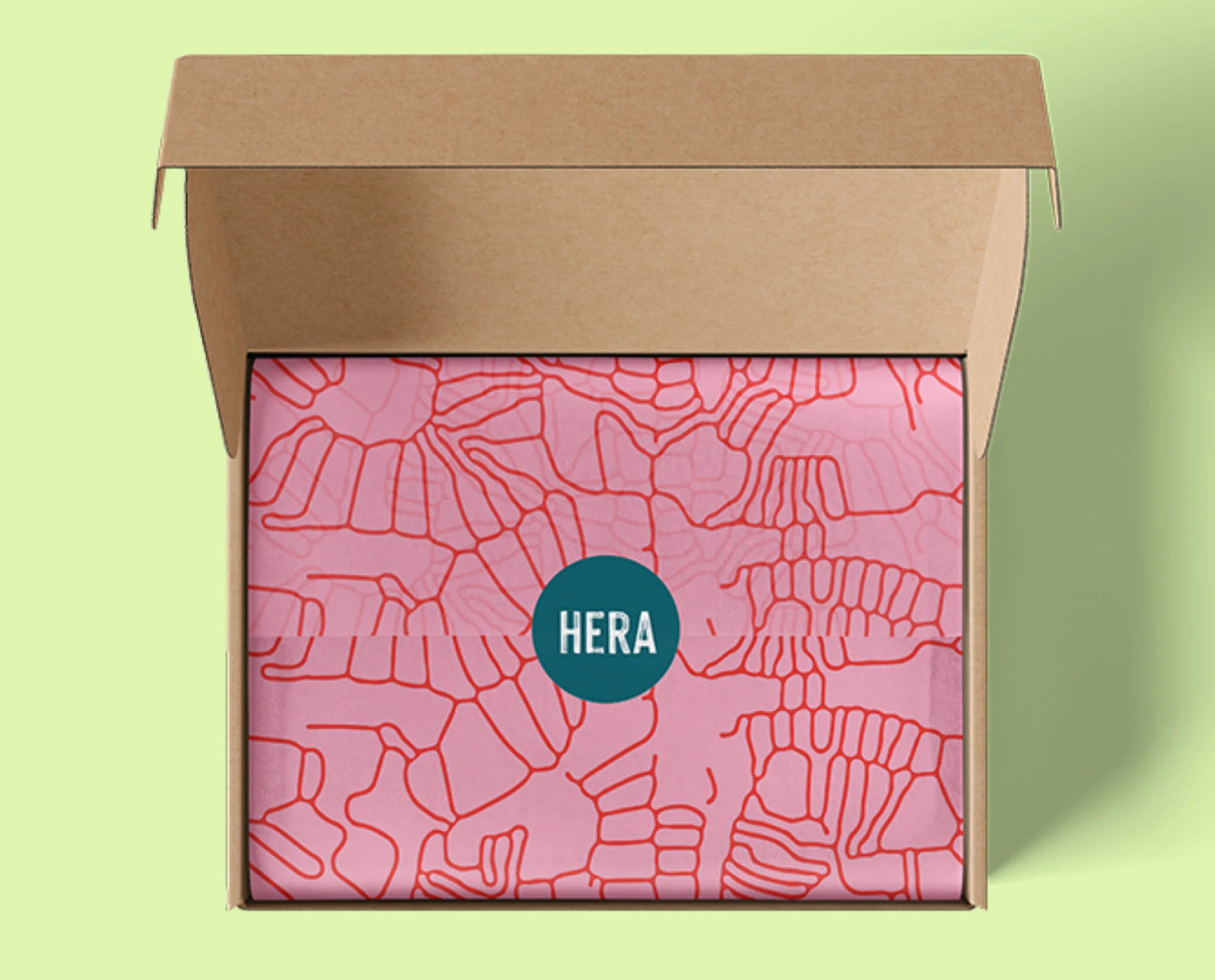
Wrapping your products in tissue paper adds an extra level of luxury, creating anticipation during the unboxing experience. It can also provide protection for delicate items. Custom-printed tissue is another opportunity to add your brand aesthetic to the experience.
3. Consider filler
Traditional filler includes Styrofoam packing peanuts, foam inserts, air pillows, and bubble wrap. Many brands are meeting customer demand for sustainability and opting for eco-friendly alternatives like recycled crinkle paper (colored or brown), excelsior (wood fibers), and biodegradable packing peanuts made from wheat or cornstarch. The type you choose depends on your product and brand values (i.e., sustainability).
4. Brand with stickers
Using stickers on a plain box or bag is a versatile and fairly inexpensive alternative to designing other custom packaging. A branded sticker can seal tissue paper or brand the outside of your packaging. You may also want to include a few extra stickers in the package as a way to thank your customers for their purchase.
5. Tuck in promotional material
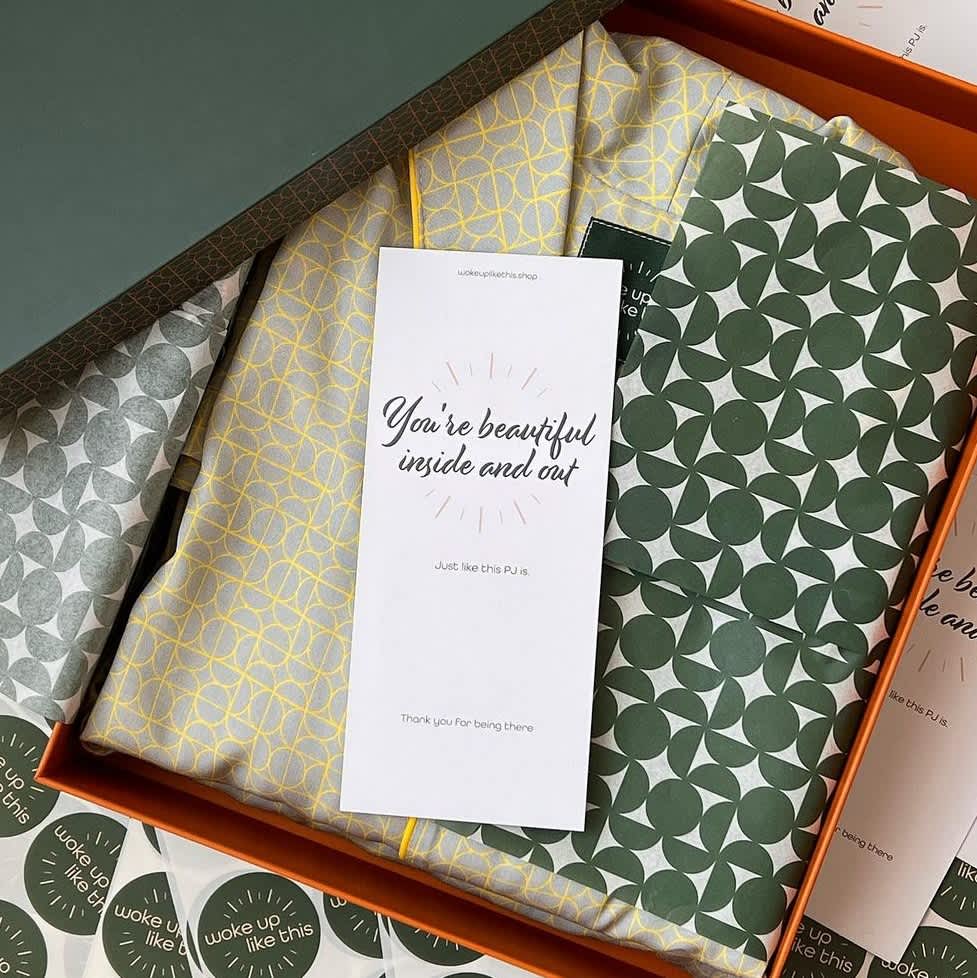
Business cards or postcards can be added to packaging to tell customers more about your brand, thank them for their purchase, and even offer a discount on a future purchase. Use QR codes to link customers to a special landing page that you can update more easily than a printed card. You can also send other types of packaging inserts such as newsletters or a branded magazine. This unique packaging idea serves as reading material that deepens the brand’s relationship with customers.
6. Add a packing slip
It’s standard to include a receipt or packing slip in your package, but many businesses don’t use this as a branding or marketing opportunity. Add your logo and on-brand messaging. Then, place the receipt and packing slip in the package at a point that makes sense—not at the top of the box where you want to make the biggest splash.
💡 Tip: When you print a packing slip on Shopify, you can customize its contents and product packaging design by adding or removing elements like your logo or product images. You might also consider including a coupon code on your packing slip to encourage repeat purchases.
7. Write a custom note
Though handwritten notes may be tricky to scale, new businesses are fighting to earn every customer. Connecting through a personal note can show customers there are real people powering your brand.
8. Include educational materials
If you sell products that require assembly or instructions for set up and use, add educational materials to your packaging. Sharing educational materials like usage instructions shows that you care about their experience, builds trust, and ensures that customers have a positive initial experience with your product.
9. Consider custom tape
Like stickers, branded packing tape can be added to a plain box at a lower cost than customizing the whole box. It comes in a variety of colorful options off the shelf, too.
10. Design seasonal packaging

To improve customer experience during the holidays and seasonal events, consider limited edition packaging design that maintains your recognizable brand identity with a festive flair. For more tips, check out this holiday shipping guide to survive and profit during the seasonal rush.
11. Add a free sample or gift
Surprise customers with a free sample or gift with purchase inside the packaging. This tactic can help you cross-sell by introducing a customer to new products. Choose an item your customer is likely to be interested in to encourage them to purchase the full size at a later date.
Product packaging costs
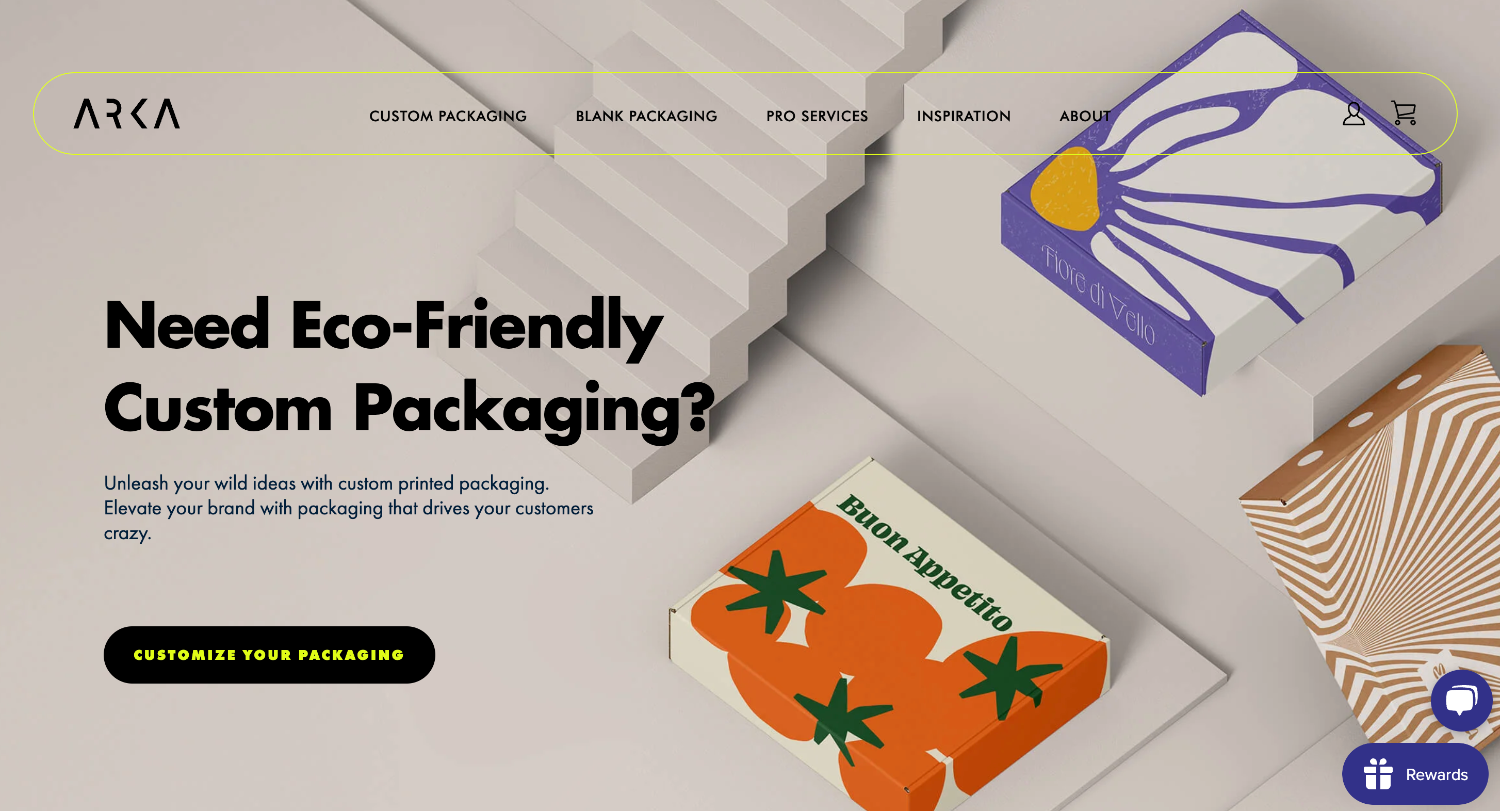
A downside to a custom-branded packaging experience can be the associated cost. You’ll need to decide based on your average order size and profit margins what options are financially feasible, along with which present the greatest value to your business and customers.
Unbranded packaging
Unbranded packaging is the cheapest solution with many options available off the shelf in a number of quantities and colors. If you go this route, you can always add inexpensive customization with branded tape or stickers. Custom stickers can cost between 10¢ and $2 each, depending on order quantity and size.
Branded packaging
Custom boxes and mailers tend to be the most expensive solution.
To create your own custom printed boxes, you may be looking at a minimum order of 250 and a cost of $2 to $25 per box. Some printing companies have no minimums—but you’ll pay for it. For example, Packlane will print 15 standard boxes for around $6 each, but if you order 10,000, your cost per unit drops to just over $2 each. On top of that, consider that ecommerce boxes will add more total weight to your shipment than a poly mailer.
Poly mailers will average 40¢ to $3 per printed mailer, depending on your order size and material—but you can order as few as 25 at a time with some suppliers (at a cost). Remember that the weight of this solution is low and will keep your shipping rates lower, too.
Tips for keeping packaging costs low
- On sites like AliExpress, unbranded colored and patterned boxes can be purchased with a minimum order of 50 units for less than 40¢ each (depending on size), with free shipping to most countries.
- The greater your order size, the cheaper the cost per unit. Strategically plan which items you will use and place larger orders to bring costs down.
- Consider the impact of weight when looking at the overall cost of your packaging. Higher weights mean higher costs to ship, which can impact your shipping strategy as a whole.
Best product packaging design examples
To improve your ecommerce packaging design, we’ve highlighted some creative ideas for shipping you can borrow from these best-in-class online businesses.
Caraway
Caraway Home is a direct-to-consumer retailer that sells non-toxic ceramic cookware in unexpected colorways. To convey its values, the brand uses recycled materials with zero-plastic bags, low-impact print dyes, and biodegradable or recyclable inserts to package and ship goods.
Caraway also includes a welcome booklet with orders, made from recycled paper, along with messages printed directly on the packaging that improve the unboxing experience.

Overall, what stands out about Caraway’s ecommerce packaging is how organized and true to its brand aesthetic it is. Because this is a premium product (with a premium cost) little touches like this go a long way to assuring the customer they’ve made a smart purchase.
Otherland
Otherland is a brand known for its beautifully packaged and fragranced candles. Otherland’s founder, Abigail Cook Stone, is a former art buyer for Ralph Lauren stores and therefore understands the importance of aesthetics at every stage of a customer’s interaction with a brand.
Whether a customer purchases a limited edition seasonal product or items from the core collection, the experience is familiar and consistent with pops of color and beautiful branding.
Allbirds
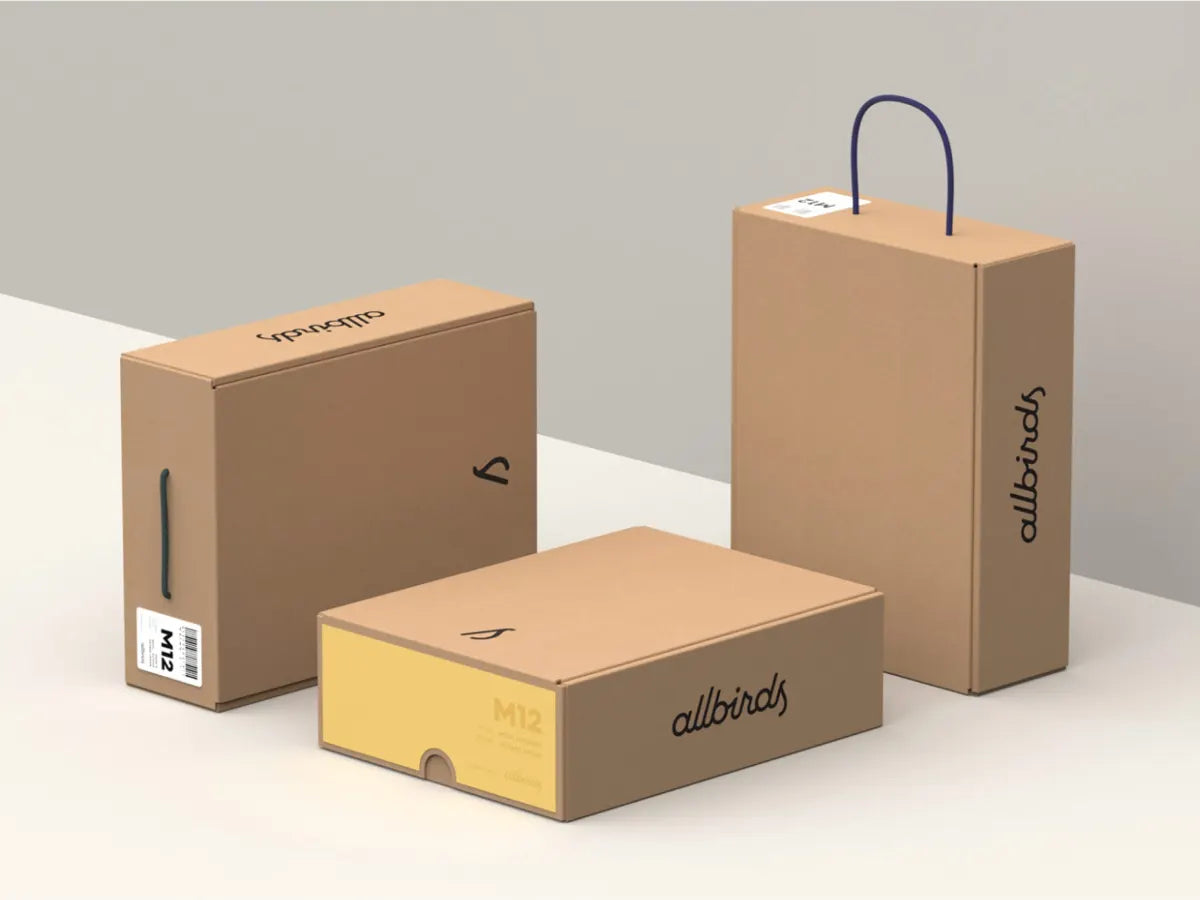
Allbirds is an ecommerce brand selling shoes made from sustainable materials, like tree fiber and sugar cane. This commitment to the planet extends to packaging that’s recycled and printed with soy inks.
Clever details in Allbirds packaging reflect the brand’s personality and focus on creating a seamless experience from the moment the package arrives. It’s playful and functional—just like the Allbirds brand.
Wild Deodorant
Wild is a pioneer in personal care, tackling one of the biggest issues in the category: plastic waste. The brand solved this problem with product packaging. The packaging design process is at the heart of brand identity for Wild, as it serves as the brand’s unique selling proposition.
“Everything from shampoo, conditioner, shower gel through to toothpaste and deodorant, people’s bathrooms are absolutely packed full of plastic,” says co-founder Charlie Bowes-Lyon. “Not only did we want to reduce that problem, but we felt we could remove plastic and single-use materials completely.”
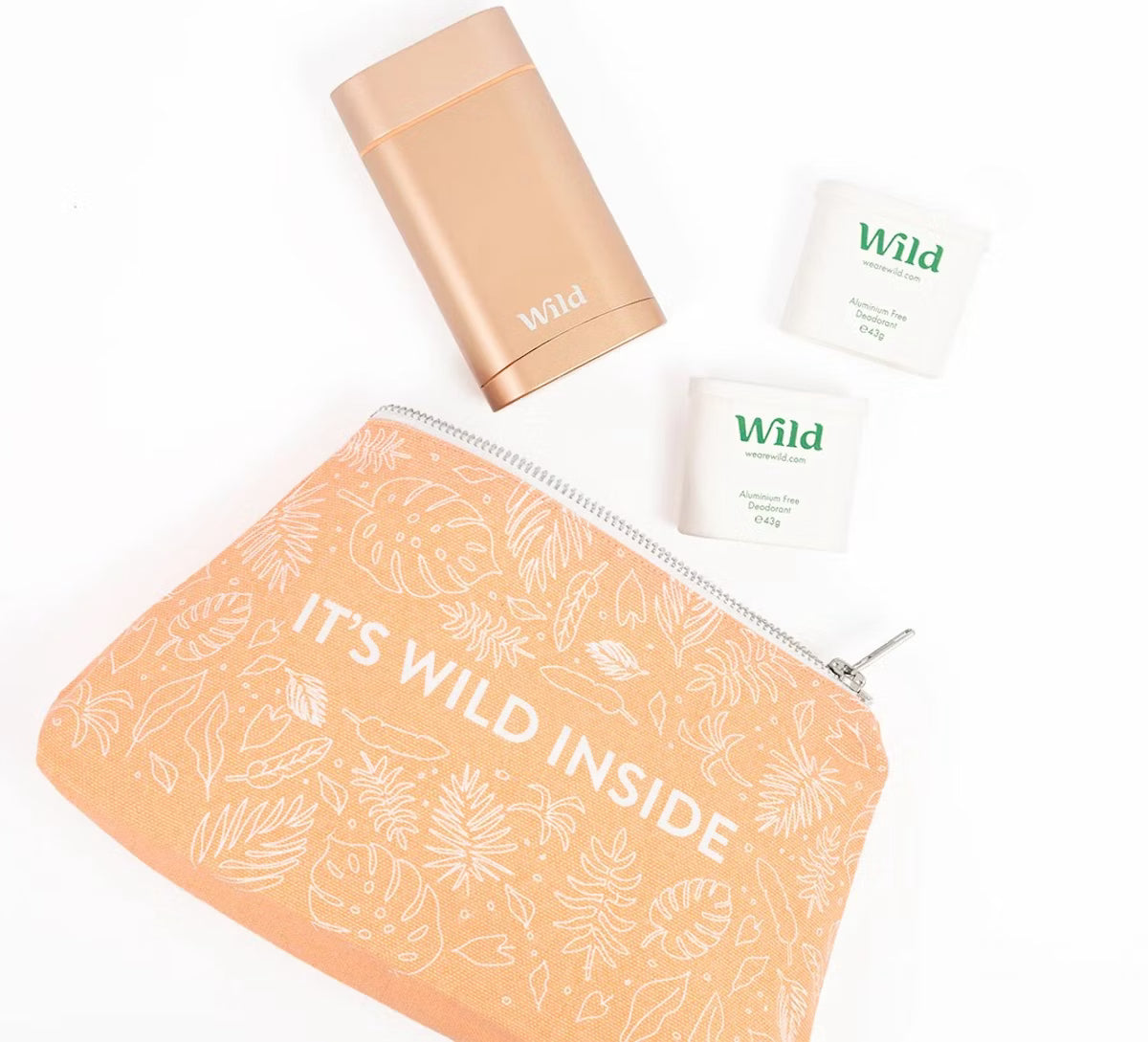
Clever packaging means that customers buy a reusable applicator once, and refill with a product that uses much less waste than conventional deodorant. The refill packaging is made from a compostable bamboo pulp.
Notice Hair Co.
Notice Hair Co. sells sustainable products for your hair, body, and home, with a mission to get as close to zero-waste as possible. It goes against the grain to offer packaging that is minimal and compostable to align with its values. The brand’s signature conditioner and shampoo bars also come wrapped in compostable paper, so there’s virtually no waste.
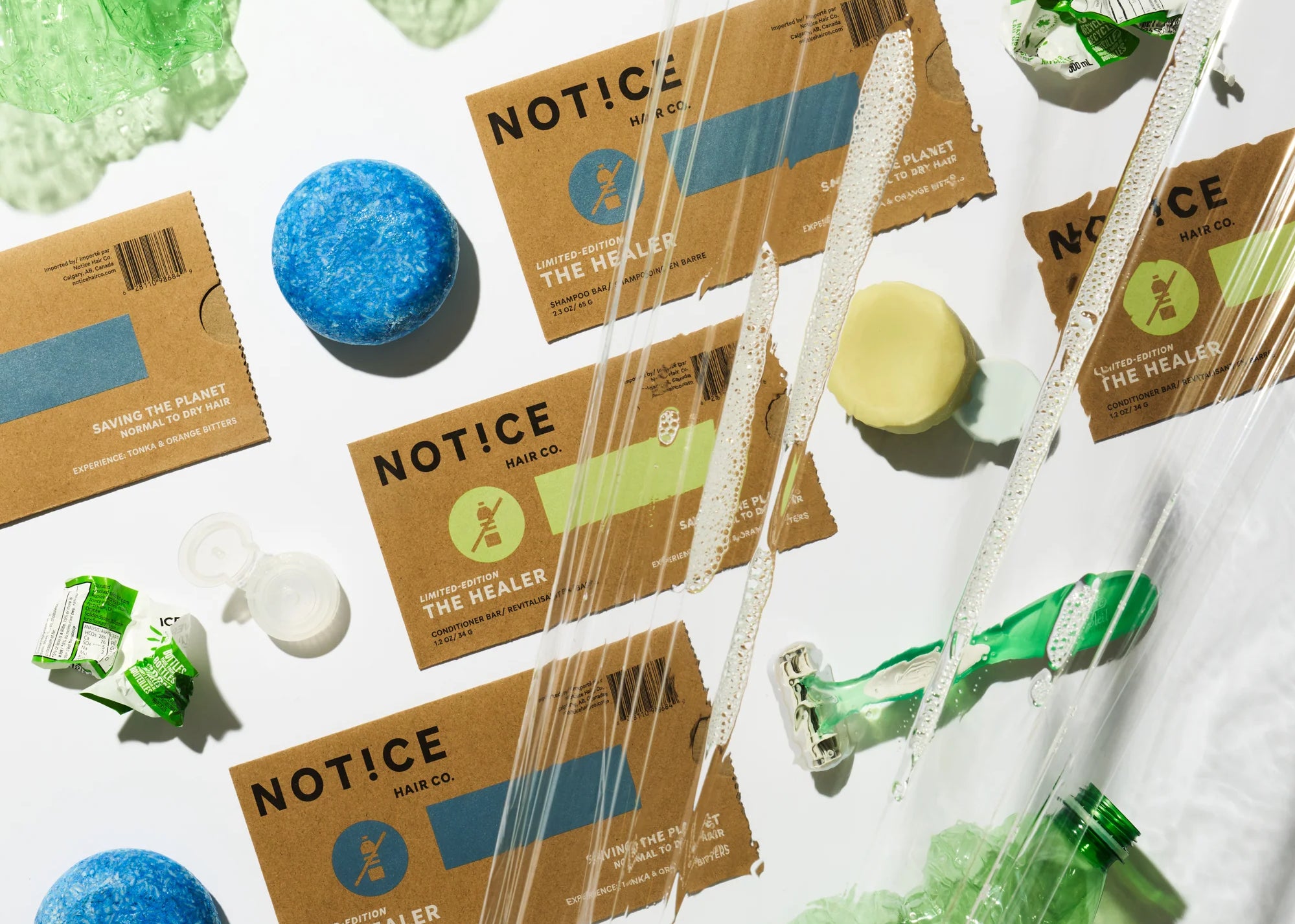
The brand continues to seek out fulfillment centers that commit to its zero-waste and no-plastic policies to lower the brand’s carbon footprint.
Create an unboxing experience worth sharing
Customized packaging that reflects your brand’s voice and values can give you the competitive edge to not only generate repeat customers but also attract new ones. Consider the customer’s experience from the first visit to your website to the moment their purchase lands on their doorstep. A thoughtful approach to packaging can create a memorable impression that turns one-time buyers into lifelong brand advocates.
Feature illustration by Gracia Lam
Additional research by Thea Earl
Product packaging FAQ
What is ecommerce packaging?
Ecommerce packaging is the outer packaging that is used to ship a product to the consumer after they purchase it online. It is sometimes called secondary packaging. Ecommerce packaging includes the outer container, infill material, and any other inserts. This packaging should adhere to a company’s brand guidelines.
What is primary, secondary, and tertiary packaging?
Primary packaging is the first layer of packaging that touches the product. This is usually made from high quality materials and printed with the brand’s logo and design elements. Examples include the product label on candy bars or the glass bottle holding face lotion. These are designed to capture attention on store shelves. Secondary packaging includes anything used to ship a product, like shipping boxes and filler. Tertiary packaging includes palettes used to ship mass quantities of product B2B.
Where can I order custom product packaging?
Suppliers of custom product packaging include:
What are the best shipping packaging types?
The best packaging types are those that work for your product and budget. The most common product packaging types for shipping include poly bags, corrugated boxes, and padded mailers. If you sell art online, rigid envelopes and cardboard tubes are the best types of packaging.
Topics:
Join 446,005 entrepreneurs who already have a head start.
Get free online marketing tips and resources delivered directly to your inbox.
Thanks for subscribing
You’ll start receiving free tips and resources soon. In the meantime, start building your store with a free 14-day trial of Shopify.

